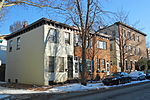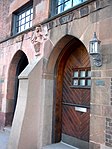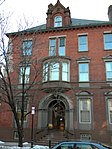Schuylkill River Park
Schuylkill River Park is a swath of land owned by the Philadelphia Department of Parks and Recreation in Philadelphia, Pennsylvania. It encompasses most of the area bordered by 25th Street and the Schuylkill River (more exactly the CSX Tracks) between Manning and Delancey Streets and the area bordered by the Schuylkill River and 26th Street between Delancey and Pine Streets. Some of this land was held by the Department of Recreation (Tennis Courts, Playground, Basketball Courts, Bike Polo / Street Hockey Area, and Recreation Center) prior to its recent merger with the Fairmount Park. In addition, the merged Department of Parks and Recreation owns the land from Taney Street to the Schuylkill River between Pine and the end of Schuylkill Pocket Veterans Memorial Field as well as O'Connor Pool. It also encompasses the Schuylkill River Park Community Garden, which is on land owned by the Department of Parks and Recreation and managed by the Center City Residents' Association. The area connects with the Schuylkill River Trail via a pedestrian bridge, which was completed in October 2012.
Excerpt from the Wikipedia article Schuylkill River Park (License: CC BY-SA 3.0, Authors).Schuylkill River Park
Schuylkill River Connector Trail, Philadelphia Center City
Geographical coordinates (GPS) Address Nearby Places Show on map
Geographical coordinates (GPS)
| Latitude | Longitude |
|---|---|
| N 39.948749 ° | E -75.181921 ° |
Address
Large Breed Dog Park
Schuylkill River Connector Trail
19146 Philadelphia, Center City
Pennsylvania, United States
Open on Google Maps







